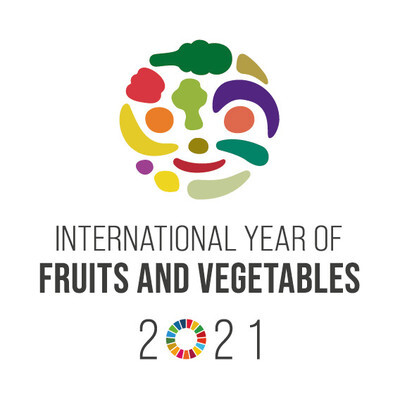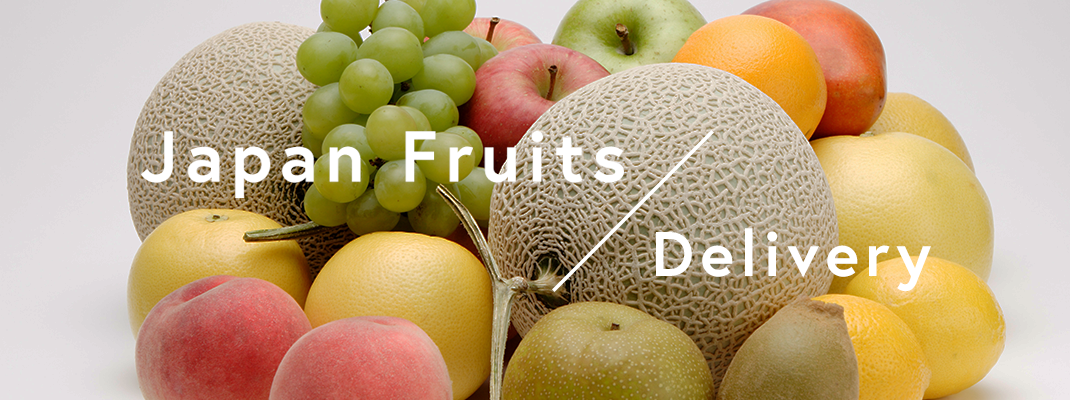May’s Recipe: Enjoy Mango and Papaya
A Simple Fruits Recipe No.1
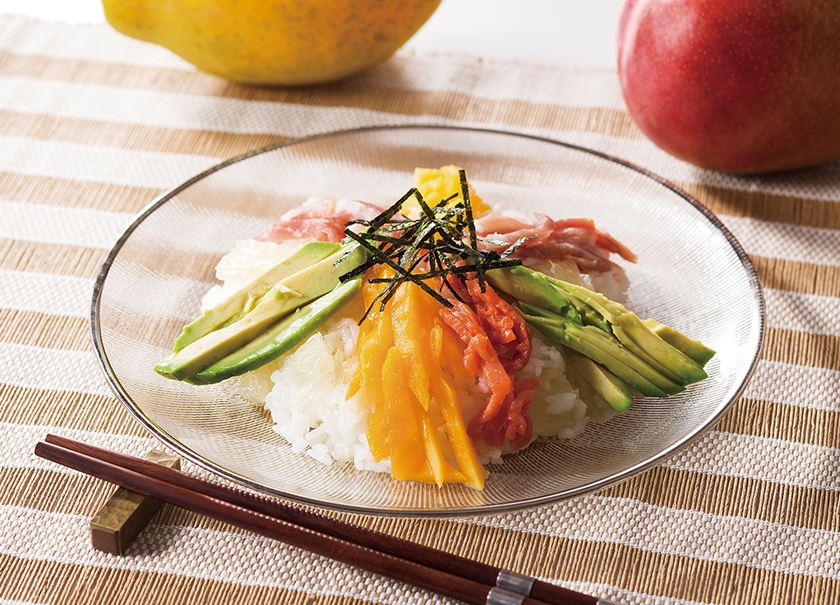
Chirashi-Zushi Topped with Mango and Papaya
Chirashi-zushi (vinegared rice topped with egg and seafood) is usually made with sashimi (raw fish), but small children should enjoy this recipe, especially on party occasions.
Ingredients (for two people)
Vinegared Rice
Mixed Vinegar
A Simple Fruits Recipe No.2
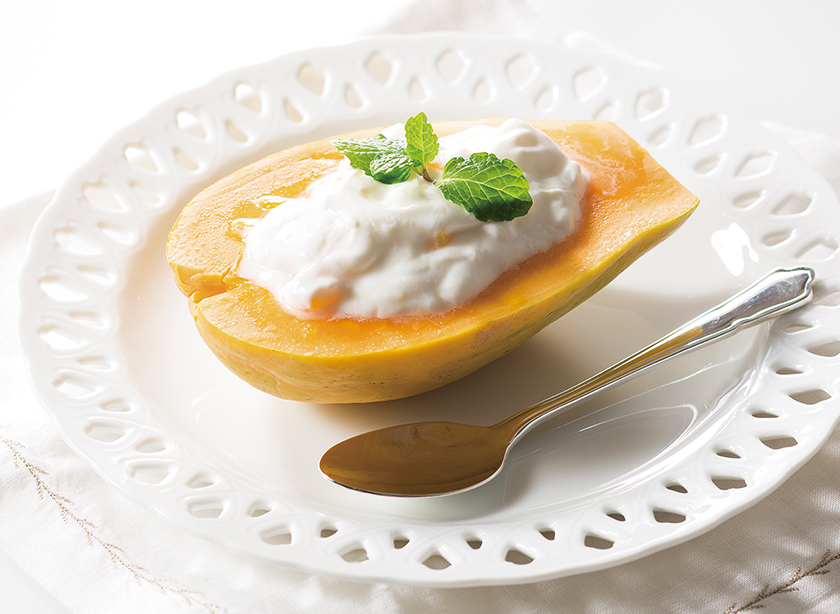
A Papaya and Mango Dessert
This is a simple, delicious dish that can be served at breakfast, or as a dessert.
Ingredients (for one person)
A Simple Fruits Recipe No.3
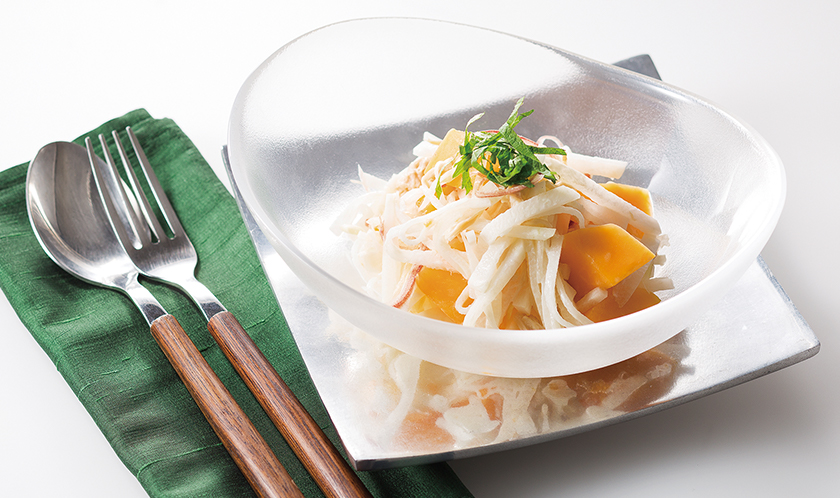
Japanese-style Papaya Salad
This is a mixed salad with both tropical and Japanese ingredients. The flavor of myoga (Japanese ginger) especially stands out in this recipe.
Ingredients (for three people)
Sauce
Produced by Shinjuku Takano Fruits Coordinator
Miyazaki Mango from Miyazaki Prefecture
The fully-ripened mangoes are a special product of Miyazaki Prefecture. The harvesting is quite unique, as the ripe fruit is caught with a net. This type of mango is called “Taiyo-no-tamago” (egg of the sun), and accounts for about ten to fifteen percent of the total production. The following is about the appeals of this high-quality mango.
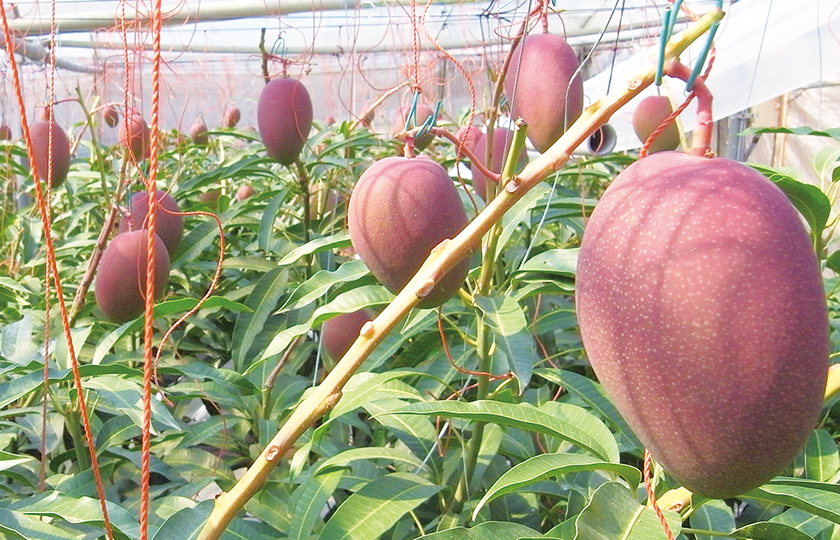
The Unique Harvesting System in Miyazaki Prefecture
From the ancient times, Miyazaki has been known as “hinata” (a sunny place). The prefectural government promotes that image, as the local average temperature is 17.4 degrees Celsius throughout the year, the hours of sunlight is long, and the number of clear weather days ranks second in Japan. So it is an ideal location to grow a tropical fruit such as a mango.
In 1976, the cultivation of Irwin mangoes started at the Prefectural Agricultural Experiment Station on a trial basis, and the commercial cultivation started in 1986 at Saito City.
The cultivation did not go smoothly at the start, as the system was not yet fully developed. The timing of harvest was determined by the producers, and the fruits were cut off with scissors, just like any other fruit. It did not taste so well, and the research continued. During their struggles, the producers found out by chance that the fruit which had dropped to the ground had an excellent taste. As the dropped fruits were damaged, the producers covered the fruit with a net to catch them when they fell off the branch. This system, devised at Miyazaki Prefecture, enables the fruits to grow to a fully ripe stage, and has spread to other regions in Japan.
Although the system has been established, covering thousands of mangoes with nets is still quite a labor. Also, each fruit must be equally bathed in sunlight, and all this work has to be done by hand. “Taiyo-no-tamago” brand was created through such hard work. This brand certifies that the mangoes cleared the criterion set by the Miyazaki Branch of Japan Agricultural Cooperative: the sugar content number is above fifteen percent; weighs more than 350 grams; no damage on the exterior, and such. The producers did not spare any efforts in raising this type of mango, so the people who purchase it should be fully satisfied.
-
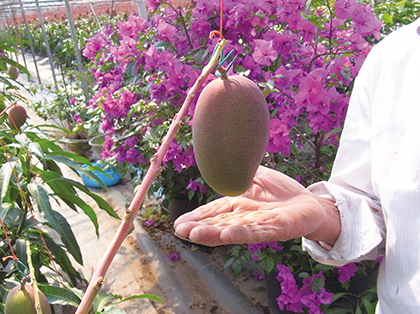
Mr. Kawagoe (the producer), gives this tall, round mango an A+ -
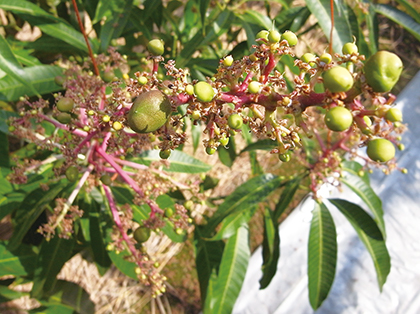
The small green fruits will grow into mangoes. Only the best will be chosen from all these candidates.
Catching the Fully-Ripened Mangoes with a Net
As the colors of the fruits starts to change, they are all covered with nets. A reflective plate is set under the net, so that the bottoms of the fruits are also bathed in sunlight. The timing to cover the fruits is important, as the nets may leave a scar on the young mangoes. Ordinarily, the fruits are harvested two weeks after it is covered.
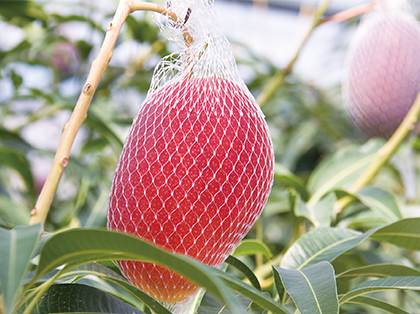
Papayas of Miyazaki Prefecture
Miyazaki Prefecture is blessed with a warm climate, a perfect place to grow fruits. Papaya is rarely grown in Japan, but Miyazaki is an exception. The following article is about the sweet and rich Miyazaki papayas, which can be enjoyed throughout the year.
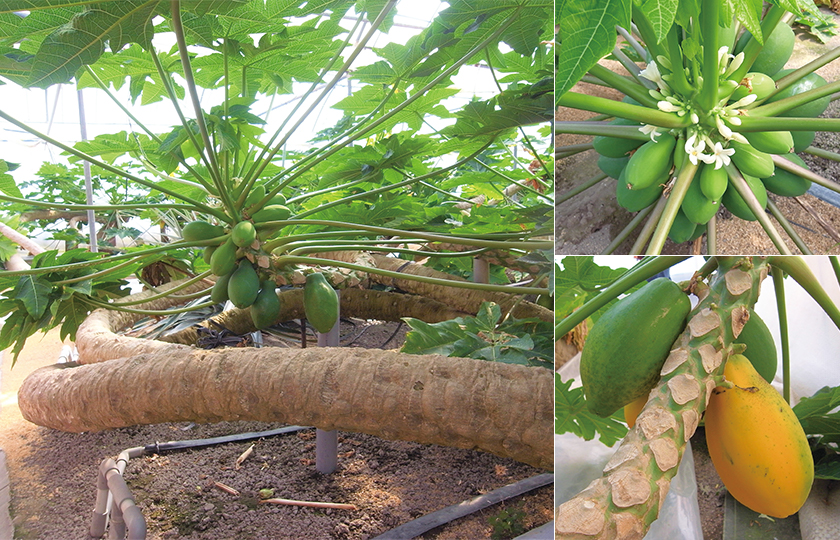
An Innovative Style to Grow Papayas in the Greenhouse
The papaya cultivation in Miyazaki started in 2004. “Sunrize Solo,” a sweet plant with a red pulp, was introduced. Papaya is a tropical fruit mainly grown in Hawaii, and a greenhouse cultivation system was employed in Miyazaki. But the papaya trees grow to ten meters in height, so some problems were expected. Selective breeding was applied to lower the height, and the trunks were stretched to grow parallel to the ground. This breeding style also influenced the harvesting, and the papayas can now be enjoyed throughout the year. Most of the papayas are grown without using pesticides, as the producers employ natural enemies for pest control. If you have the chance, try the Miyazaki papayas which are mellow to the tongue, and has a deep, elegant taste.
This article was provided by Shinjuku Takano

